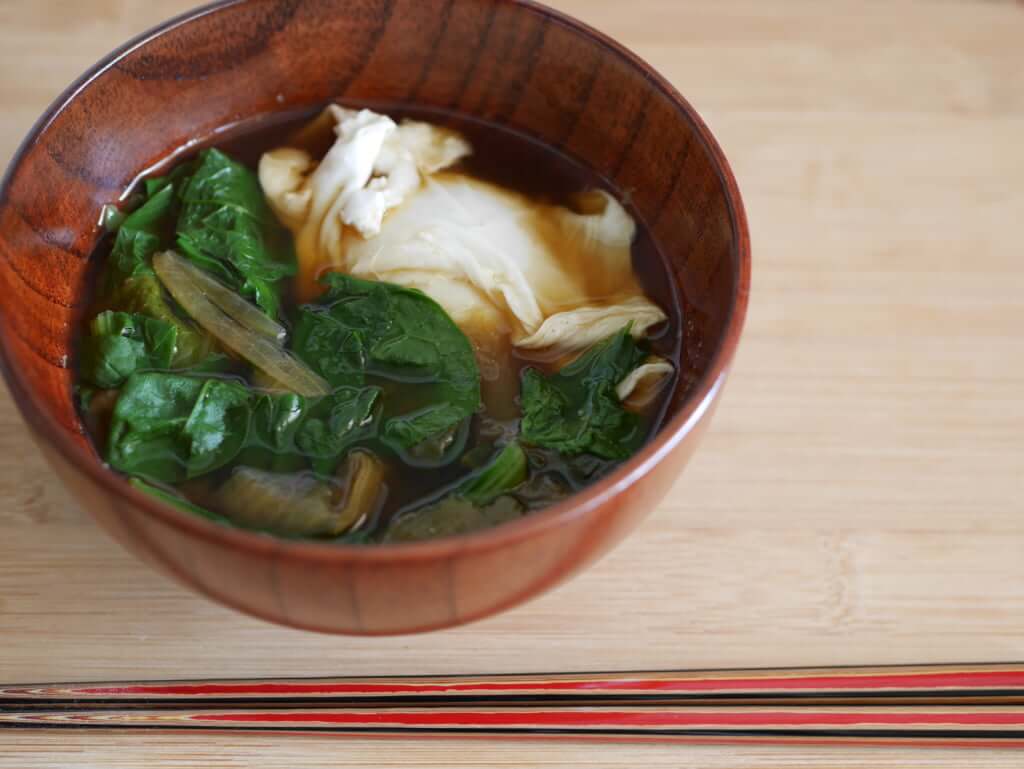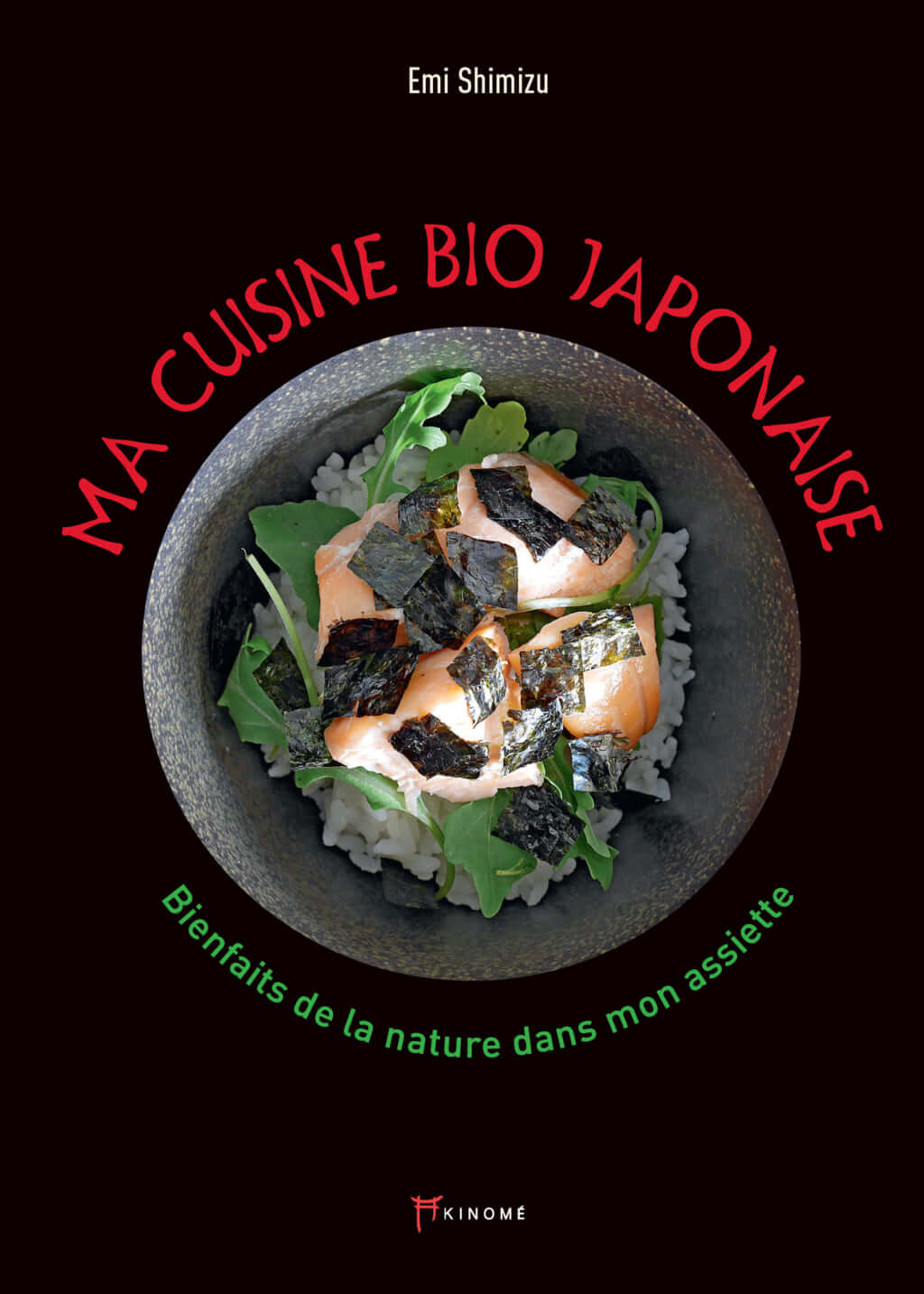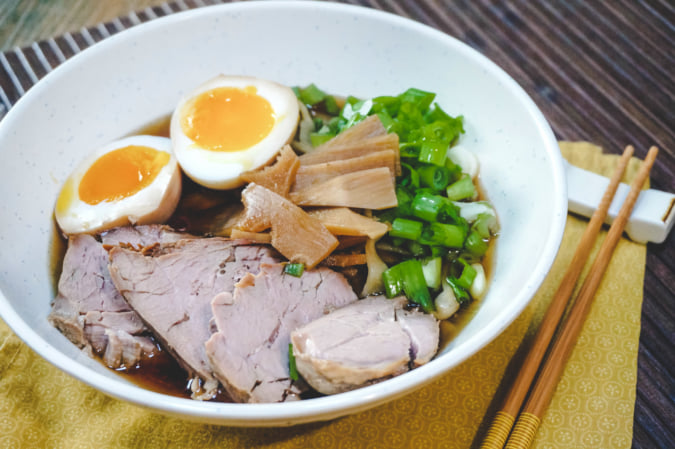Recipe for Miso Soup with Poached Egg and Spinach by Emi Shimizu
The chef shares her version of the classic Japanese broth, in which ‘wakame’ seaweed is replaced by spinach leaves.

© Éditions Akinomé
Miso soup may be an integral dish in Japanese cuisine, but in this recipe, chef Emi Shimizu sidesteps convention a little. Here, spinach replaces wakame seaweed and the soup is enhanced with a poached egg, which, once broken apart, will allow its yolk to add an additional flavour to the kombu broth. It is a nidashi broth, made from Japanese seaweed, which obtains its salty flavour once the algae has been infused in boiling water, unlike kombu mizudashi broth, which is infused in cold water.
This recipe is taken from the book Ma cuisine bio japonaise (‘My Organic Japanese Kitchen’), in which the chef shares 60 recipes made using fresh, seasonal ingredients that can be easily found in organic shops.
Serves 4
Ingredients
For the broth
1 l plain water
3 g kombu
Pour the miso soup
1 l kombu broth
150 g spinach
1 onion
4 eggs
2 tbsp miso
1 tsp salt
Method
To make the kombu nidashi
Pat the kombu dry with a moist cloth. In a saucepan, leave the kombu to soften in the cooking water for 15 minutes.
Place the pan over a medium heat and cook gently. When the broth starts to come to the boil, remove the kombu.
To make the miso soup
Prepare one portion of kombu broth.
Chop the onion and cut up the spinach leaves.
Place the miso and salt in a bowl and set aside.
Pour the kombu broth into a saucepan and bring to the boil.
Cook the onions in the kombu broth for five minutes.
Once the onions are cooked, add the eggs one by one. Poach for two minutes.
Add the spinach and heat for one minute, then remove from the heat.
Ladle a spoonful of the broth into a bowl with the miso and dilute.
Pour everything into the saucepan and stir.
Serve in individual bowls.
Ma cuisine bio japonaise (‘My Organic Japanese Kitchen’) (2020), a recipe book by Emi Shimizu, is published by Editions Akinomé (only in French).
Emi Shimizu is a Japanese chef who was born in Yokohama. After being initiated into cooking by her mother, she decided to study architecture. She worked as an interior designer for a few years, but discovered a passion for French pâtisserie that led her to move to France in 2000.
Since then, she has been writing a blog in which she regularly shares her recipes, created exclusively from organic ingredients.

© Éditions Akinomé
TRENDING
-
Ishiuchi Miyako, A Singular Perspective on Women
Recipient of the 2024 Women in Motion Award, the photographer creates intimate portraits of women through the objects they left behind.

-
Recipe for Ichiraku Ramen from ‘Naruto’ by Danielle Baghernejad
Taken from the popular manga with the character of the same name who loves ramen, this dish is named after the hero's favourite restaurant.

-
Namio Harukawa, Master of Japanese SM Art
'Garden of Domina' offers a dive into the world of an icon of ‘oshiri’, whose work has now reached a global audience.

-
The Tattoos that Marked the Criminals of the Edo Period
Traditional tattoos were strong signifiers; murderers had head tattoos, while theft might result in an arm tattoo.

-
The Emperor of Japanese Porn is Now the Star of a Netflix Series
Deliciously funny, The Naked Director especially succeeds in reviving the atmosphere that was so characteristic of 1980s Japan.





